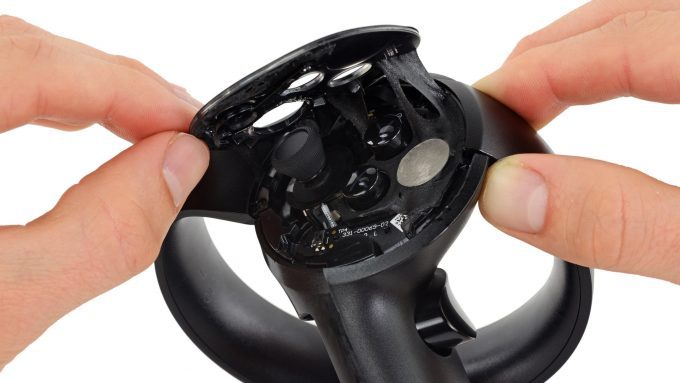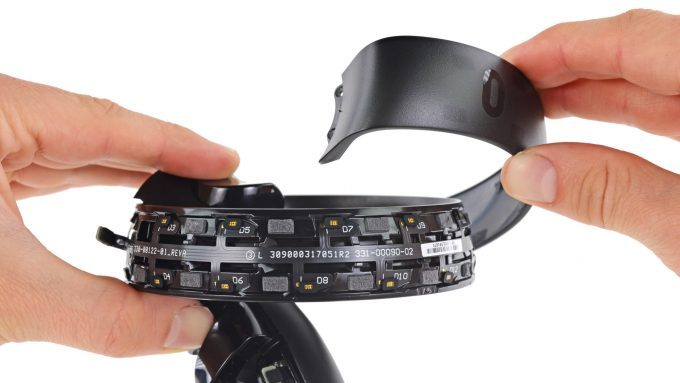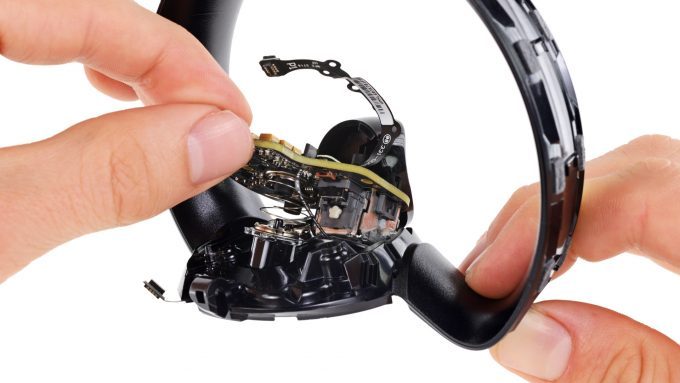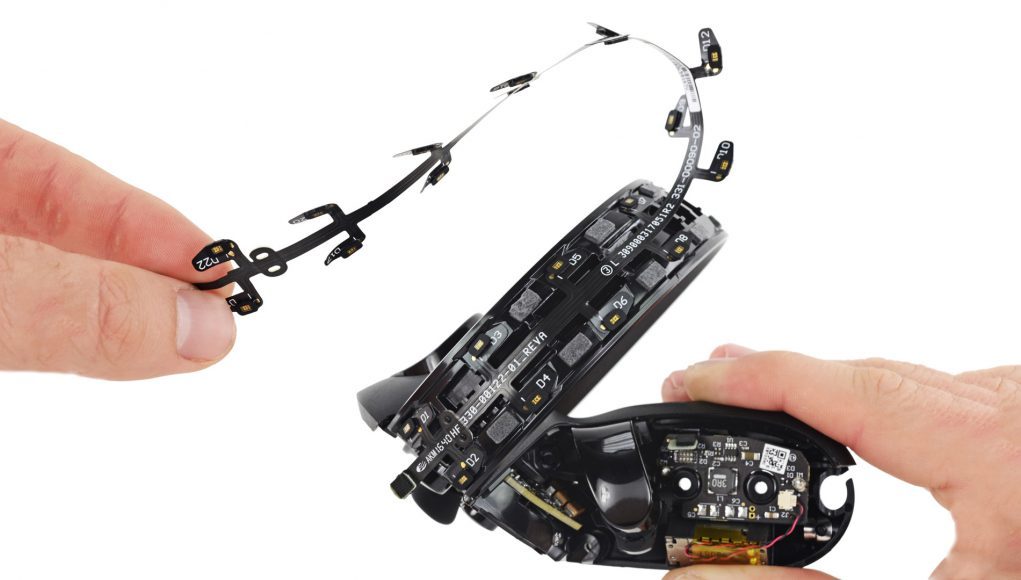iFixit continue their relentless quest to pull apart every electronic gadget they can get their hands on, including a detailed teardown of the Oculus Touch controllers (which slipped by us on the run up to the Winter holiday season).
The Oculus Touch motion controllers took longer to reach the market than many would have liked, but the final product was very well received. As an ergonomics exercise, Touch comfortably surpassed HTC’s Vive controllers, being more naturally sculpted (with opposing shapes for the left and right hand), and with better weight distribution, allowing them to rest in the palms with only a loose grip. And being far more compact too, it is also an impressive design exercise, so it’s interesting to see the units disassembled and find where (and how) all the components have been stuffed inside.

Oculus doesn’t expect the end user to fiddle with the Touch internals, so it’s no surprise that there are a bunch of hidden screws and layers of glue obstructing the teardown process. Once inside, the complex packaging job is revealed, with its densely layered circuit boards barely wasting any space.

The ‘spinal cord’ of the LED array is a neat design, containing 22 of the 24 IR LEDs that are concealed behind the surface of the controller’s tracking ring, much like the hidden LEDs in the Rift headset. iFixit points out that 24 is also the number of sensors embedded in each Vive controller; probably a coincidence, considering the two systems take very different approaches to tracking.

The main board is crammed full of components, including some familiar Bluetooth and motion processing chips. It also features two springs that sit below the face buttons, which are part of the capacitive sensing circuit. The linear oscillator is mounted low down in the grip, near the battery, as it would deliver the most effective vibration there, while also helping to achieve the Touch’s excellent weight distribution.
For all the details, including plenty more detailed images of the hardware and components inside, visit the full teardown at iFixit.
If you liked this, you might also enjoy the Rift teardown, PSVR teardown, and HDK2 teardown.







